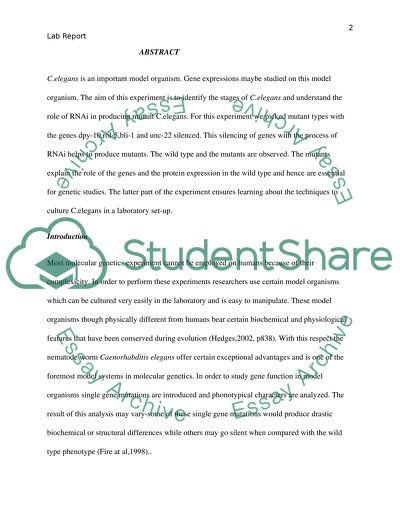Cite this document
(“Identification the Stages of C elegans Lab Report”, n.d.)
Retrieved from https://studentshare.org/biology/1492610-celegans
Retrieved from https://studentshare.org/biology/1492610-celegans
(Identification the Stages of C Elegans Lab Report)
https://studentshare.org/biology/1492610-celegans.
https://studentshare.org/biology/1492610-celegans.
“Identification the Stages of C Elegans Lab Report”, n.d. https://studentshare.org/biology/1492610-celegans.


